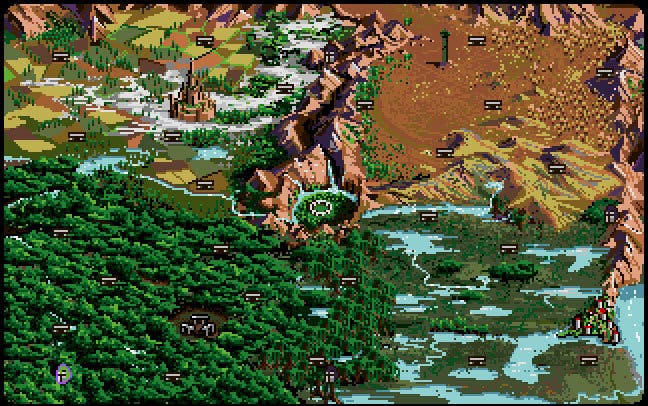Retrospective: Moonstone
Gore blimey.
It's 1992 and America is in uproar over a fighting game which features acts of digital disembowelment so vivid and nasty that the US Senate holds a special investigation into video game violence. "Too violent for kids?" asks Time magazine. The game, of course, is Midway's gleefully adolescent Mortal Kombat, shocking decent upright citizens with its lumpy decapitations and spine ripping action.
For Amiga gamers, it all seemed rather tame. That's because one year before Mortal Kombat made its bloody debut we'd already been treated to a game that was every bit as gruesome as anything Kano and co. got up to, and far more interesting to boot. That game was Moonstone, or A Hard Day's Knight to use its full pun-tastic title.
To call it just a fighting game would be grossly unfair, though it's understandable that it's the medieval combat that still sticks in the memory twenty years later. After all, this was a game where players could be crushed, burned, sliced in half, gored in multiple ways and squeezed so hard they literally burst open. After that lot, simply having your head chopped off was nothing special (though you could do that as well, naturally). But beyond the sticky viscera lurked a strange genre hybrid, a non-linear turn-based multiplayer strategy RPG that just happened to feature horrifically graphic real time battles.
The plot, which could easily have been used to sell the game as a Spinal Tap tie-in, revolved around that most mysterious of locations, Stonehenge (where the banshees live, and they do live well). Four knights, all on the same quest, fought their way across a free-roaming world map, trying to find the four keys that would allow them to enter the Valley of the Gods, defeat the guardian within and earn the Moonstone of the title, which had to be returned to Stonehenge (where a man is a man, and the children dance to the pipes of Pan) for reasons that were never entirely clear.

Right from the start, Moonstone whirled giddily from one gameplay style to another. Each player moved their knight around the map, entering battle arenas in search of the magical keys, or visiting towns and other locations to buy supplies, gamble or discover cunning secrets. Characters could also be levelled up, earning XP for each successful fight, making them more powerful but increasing the number of enemies they'd encounter by way of balance.
There was real strategy at work here, as all four knights were in competition with each other, and any not controlled by human players fell to a ruthless computer AI. With limited time to work your way from one spot to another, and with mountains and rivers on the map slowing your helmeted cursor, you couldn't just charge around recklessly. If you were in a griefing mood, you could chase after other players and challenge them to direct combat, and they could do the same to you. The winner would then be able to loot their victim for one item, leaving the corpse to be pillaged by whoever came across it first.
The more you explored the single screen gameworld, the more things you could discover; such as the wizards, who could grant magical benefits, rob you blind or turn you into a frog depending on their mood. In keeping with its title, the game also followed its own internal calendar through a day and night cycle, with the full moon granting certain enemies enhanced strength and the passage of time bringing an enormous dragon into play, swooping over the map and attacking any knights in its path. The dragon was beatable, but only by a knight who had stocked up on magical weapons.

